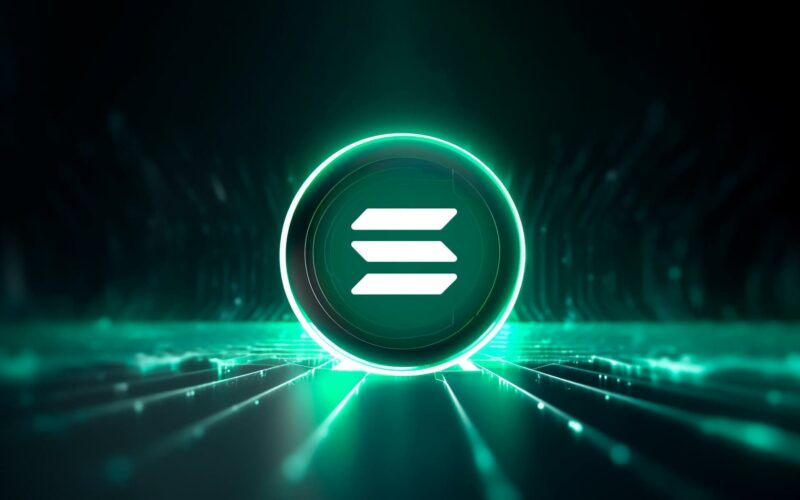Solana is a high-performance blockchain platform that aims to provide fast, secure, and scalable decentralized applications and crypto-currencies. With its innovative technology, Solana has gained popularity in the crypto space as a promising platform for developers and users alike. One of the key features that sets Solana apart from other blockchain networks is its lightning-fast transaction speeds and low fees, making it an attractive option for anyone looking to use cryptocurrencies for everyday transactions.
At the core of Solana’s technology is its Proof of History (PoH) consensus mechanism, which helps to streamline the validation of transactions on the network. By leveraging PoH, Solana is able to achieve high throughput without compromising on security. Additionally, Solana’s scalability is further enhanced by its unique architecture, which allows the network to handle thousands of transactions per second, making it one of the fastest blockchain platforms available today.
For those interested in investing in cryptocurrency, SOL is the native token of the Solana network. By holding SOL tokens, users can participate in the network’s governance and earn rewards through staking. With its growing ecosystem of decentralized applications and projects, Solana is positioning itself as a major player in the blockchain industry, offering users a secure and efficient platform for a wide range of applications.
Key Takeaways:
- Solana is a high-performance blockchain platform designed for decentralized applications and crypto-currency transactions.
- SOL is the native cryptocurrency of the Solana network used for transactions, staking, and securing the network through Proof of Stake (PoS).
- Solana’s performance is achieved through its unique consensus mechanism called Proof of History (PoH) combined with Proof of Stake (PoS) consensus.
- The Solana network boasts high throughput, low latency, and low transaction fees, making it ideal for scalable decentralized applications.
- Developers on Solana can build powerful decentralized applications using programming languages like Rust and benefit from a scalable and efficient network.
- Solana’s ecosystem includes projects in decentralized finance (DeFi), non-fungible tokens (NFTs), and more, contributing to the growth of the network.
- Investing in SOL can be a way to support the Solana network while also potentially benefiting from its growing popularity and adoption in the crypto space.
Understanding Blockchain Technology
Basics of Blockchain
Understanding blockchain technology is crucial to grasping how Solana, a high-performance blockchain, operates. At its core, a blockchain is a decentralized and distributed ledger technology that stores data across a network of computers. Each block in the chain contains a list of transactions, and once verified, it is added to the previous blocks, creating a chain of blocks – hence the name blockchain. The data stored on a blockchain is immutable, transparent, and secure due to cryptographic principles.
Blockchain technology eliminates the need for intermediaries by enabling peer-to-peer transactions, reducing costs, and increasing efficiency. Transactions are validated through a consensus mechanism, ensuring the integrity of the network. This technology has been widely adopted beyond cryptocurrencies, revolutionizing industries such as supply chain management, healthcare, and voting systems. Its decentralized nature makes it resistant to censorship and fraud, providing a new paradigm for secure data storage and transfer.
Smart contracts, self-executing contracts with the terms directly written into code, further enhance blockchain functionality by automating processes and removing the need for intermediaries. This innovation has opened up endless possibilities for decentralized applications (dApps) and has spurred the development of blockchain ecosystems like Solana.
How Solana’s Blockchain Stands Out
For those delving into the world of blockchain technology, understanding how Solana stands out can shed light on its disruptive capabilities. Solana sets itself apart by offering high transaction speeds and low fees, thanks to its unique consensus mechanism called Proof of History (PoH). This innovative approach timestamps transactions before they are added to a block, streamlining the consensus process and increasing network scalability.
Moreover, Solana’s architecture is designed to support thousands of transactions per second, far surpassing traditional blockchains like Bitcoin and Ethereum. Its performance is further enhanced by a system of parallel processing, allowing multiple transactions to be processed simultaneously. This combination of speed, scalability, and low costs makes Solana an attractive platform for developers and users alike, driving innovation in decentralized applications and financial services.
Plus, Solana’s commitment to decentralization and security, coupled with its user-friendly developer tools, makes it a formidable player in the blockchain space. Its efficient proof-of-stake consensus mechanism, coupled with strong security measures and community governance, ensures the network’s resilience and robustness. By leveraging cutting-edge technology and fostering a vibrant ecosystem, Solana continues to push the boundaries of what is possible with blockchain innovation.
Solana’s Historical Context
The Founders and Early Development
Development of Solana began in 2017 when Anatoly Yakovenko, a former engineer at Qualcomm, gathered a team of experts in distributed systems, cryptography, and economic design with the vision of creating a highly scalable blockchain platform. Together with his team, Yakovenko set out to address the scalability issues that have plagued many existing blockchain networks, aiming to design a solution that could handle thousands of transactions per second without sacrificing decentralization.
The team’s efforts culminated in the launch of the Solana Mainnet beta in March 2020, marking a significant milestone in the project’s development. The network’s innovative approach to scalability quickly gained attention within the blockchain community, attracting developers and enthusiasts alike. Solana’s native cryptocurrency, SOL, also gained traction as more users recognized its potential as a fast and low-cost transactional asset.
Since its early days, Solana has seen rapid growth and adoption, with its ecosystem expanding to include a diverse range of decentralized applications (dApps) and projects. The team behind Solana continues to push the boundaries of what is possible with blockchain technology, aiming to make decentralized applications more accessible and user-friendly. As Solana gains momentum in the crypto space, its community continues to grow, driving innovation and development on the network.
The Evolution of Solana’s Ecosystem
Ecosystem surrounding Solana has witnessed remarkable growth, with an increasing number of developers building on the network and launching innovative projects. The vibrant Solana ecosystem is fueled by a robust developer community, which actively contributes to the network’s expansion and adoption. Solana’s unique combination of high throughput, low latency, and low fees has made it an attractive platform for developers looking to create scalable and efficient decentralized applications.
Understanding the evolution of Solana’s ecosystem requires recognizing the network’s commitment to innovation and developer empowerment. By offering a scalable and developer-friendly environment, Solana has positioned itself as a leading blockchain platform for the next generation of decentralized applications. As the ecosystem continues to evolve, Solana remains dedicated to fostering a thriving community of developers and users who are driving the future of blockchain technology forward.
Technical Framework of Solana
Proof of History (PoH) – Solana’s Core Innovation
For Solana, the Proof of History (PoH) is a groundbreaking innovation that fundamentally alters the blockchain consensus mechanism. By incorporating a historical record of previous events into the protocol itself, Solana is able to ensure a secure and efficient ordering of transactions. This unique approach allows Solana to achieve consensus without relying on costly computations, making it a highly scalable solution for decentralized applications.
Solana leverages PoH to provide a reliable timeline of events within the network, enabling validators to reach agreement on the order of transactions quickly and efficiently. This streamlined process significantly enhances the overall performance of the blockchain, making it one of the fastest and most efficient platforms available in the market today.
With Solana’s PoH mechanism, users can enjoy low-latency transaction speeds and minimal fees, making it an ideal choice for applications that require real-time processing and high throughput. This innovative approach to consensus is a key factor in Solana’s ability to handle thousands of transactions per second, positioning it as a leading solution for the future of decentralized finance.
Sea Level: Solana’s Scalability Solution
Any discussion of Solana’s technical framework must include Sea Level, its innovative scalability solution. Sea Level is designed to address the scalability challenges faced by traditional blockchain networks by introducing a unique architecture that enables horizontal scaling without sacrificing security or decentralization.
For instance, Sea Level in Solana utilizes a multi-threaded transaction processing model that allows for parallel transaction execution, significantly increasing the network’s throughput capacity. This revolutionary approach ensures that Solana can maintain high performance levels even as the network grows in complexity and usage.
Solana’s Sea Level scalability solution is a game-changer for the blockchain industry, offering a path to mass adoption by providing the speed and efficiency required for widespread use in various applications, including decentralized exchanges, gaming, and more.
Gulf Stream: Mempool-less Transaction Forwarding
Solana’s Gulf Stream introduces a mempool-less transaction forwarding mechanism that eliminates the need for a traditional transaction pool, streamlining the process of propagating transactions through the network. This innovative approach reduces latency and enhances the overall transaction throughput of the Solana blockchain.
Solana’s Gulf Stream solution ensures that transactions are immediately processed and forwarded to validators without delay, optimizing the efficiency of the network and providing users with a seamless experience. By removing the mempool bottleneck, Solana can achieve high transaction speeds and low fees, making it an attractive option for applications that require fast and reliable blockchain transactions.
Solution With Solana’s Gulf Stream, developers can build applications that require real-time processing and high-frequency transactions without worrying about network congestion or delays. This innovative approach sets Solana apart as a leader in scalable blockchain solutions.
The SOL Token
Now, let’s examine into the intricacies of the SOL token, the native cryptocurrency of the Solana blockchain. SOL plays a pivotal role in facilitating transactions, running applications, and participating in the network’s governance. As with many digital currencies, understanding the tokenomics, distribution, and use cases of SOL is crucial for anyone looking to engage with the ecosystem.
Tokenomics: Supply, Distribution, and Inflation
With a maximum supply of 489 million SOL tokens, the distribution is designed to be fair and transparent. A significant portion of SOL was allocated for ecosystem development, partnerships, and community initiatives. The protocol has a deflationary mechanism, with a decreasing inflation rate over time. This sustainability feature aims to prevent excessive token issuance and devaluation, ensuring the long-term health of the network.
It’s important to note that the Solana blockchain operates on a unique Proof-of-History (PoH) consensus mechanism. This innovative approach to timekeeping enhances scalability and efficiency by ordering transactions before entering the mempool. This means that token distribution and inflation are intricately linked to the network’s overall performance and integrity.
Use Cases of SOL within the Solana Ecosystem
Tokenomics aside, SOL serves a variety of utility functions within the Solana ecosystem. From paying for transaction fees to participating in decentralized applications (dApps) and governance activities, SOL holds significant value for network participants. Additionally, developers can utilize SOL to create and execute smart contracts, further expanding the ecosystem’s capabilities.
This versatile utility cements SOL’s position as a foundational element of the Solana blockchain, driving adoption and innovation across various sectors. Whether you are a user, investor, or developer, understanding how SOL functions within the ecosystem is crucial for maximizing its potential.
Staking SOL: Incentives and Rewards
Inflation is a critical aspect of staking SOL within the Solana network. By locking up SOL tokens, users can participate in securing the network and earning additional rewards. Staking provides passive income opportunities while contributing to network security and decentralization. Users can choose between various staking options, each offering different levels of risk and reward.
The incentivization mechanism encourages active participation in the Solana ecosystem, fostering a robust and engaged community. Staking SOL not only generates rewards but also strengthens the network’s resilience and efficiency. Understanding the intricacies of staking is crucial for those looking to actively support and benefit from the Solana blockchain.
Smart Contracts and DApps on Solana
Writing and Deploying Smart Contracts
Not only is Solana known for its high-speed transactions and low fees, but it also provides a robust ecosystem for building and deploying smart contracts. One of the key advantages of Solana is its support for the popular programming language Rust, making it accessible to a wider range of developers. Writing smart contracts on Solana is made easier with tools like Anchor, which simplifies the development process and provides a framework for building decentralized applications (DApps).
Table: Writing and Deploying Smart Contracts
| Pros | Cons |
|---|---|
| High-speed transactions | Learning curve for Rust programming |
| Low transaction fees | Complexity of development tools |
Noteworthy DApps within the Solana Ecosystem
Writing DApps on Solana opens up a world of possibilities, with various projects gaining traction within the ecosystem. Some notable DApps include Serum, a decentralized exchange (DEX) that offers lightning-fast trading speeds and low fees. Others, like Audius, a decentralized music streaming platform, showcase the potential for innovation on the Solana blockchain. These DApps demonstrate the versatility and scalability of the Solana network, attracting developers and users alike.
Table: Noteworthy DApps within the Solana Ecosystem
| Popular DApps | Use Cases |
|---|---|
| Serum | Decentralized exchange (DEX) |
| Audius | Decentralized music streaming platform |
DApps are at the forefront of blockchain innovation, and Solana’s high-performance blockchain has positioned itself as a top choice for developers looking to create scalable and efficient decentralized applications. The Solana ecosystem continues to grow, with new projects pushing the boundaries of what is possible with DApps. As the demand for decentralized services increases, Solana’s speed and low costs make it an attractive option for building the next generation of blockchain applications.
Comparing Solana DApps with Other Blockchains
Any comparison of Solana DApps with those on other blockchains must consider key factors such as transaction speed, scalability, and development costs. Solana’s lightning-fast transaction speeds set it apart from many other blockchains, offering near-instant finality for transactions. Additionally, Solana’s scalability allows for a high throughput of transactions, making it ideal for DApps that require high performance.
Table: Comparing Solana DApps with Other Blockchains
| Metrics | Solana |
|---|---|
| Transaction Speed | Lightning-fast |
| Scalability | High throughput |
Deploying DApps on Solana comes with its own set of considerations, including the need for developers to understand Solana’s unique architecture and programming requirements. While the learning curve may be steep, the rewards of building on a high-performance blockchain like Solana are undeniable. As the blockchain ecosystem evolves, Solana continues to be a frontrunner in the race for efficient and scalable decentralized applications.
Solana’s Network Participation
All participants in the Solana network play crucial roles in ensuring its security and efficiency. Validators are the backbone of the network, responsible for validating transactions and maintaining the integrity of the blockchain. Delegators support the network by staking their tokens with validators, helping secure the network and earning rewards in the process.
Validators: The Network’s Guardians
To become a validator on the Solana network, one must meet certain technical requirements and stake a minimum amount of SOL tokens. Validators are responsible for processing transactions, maintaining network consensus, and ensuring the security and decentralization of the network. They play a vital role in preventing attacks and maintaining the overall health of the blockchain.
Steps to Become a Validator
An aspiring validator must first set up a node and configure it to connect to the Solana network. Once the node is up and running, the validator must stake a certain amount of SOL tokens to show commitment to the network. Validators are then elected based on their stake amount and performance metrics, such as uptime and reliability. Successful validators are rewarded with transaction fees and newly minted SOL tokens.
Plus, validators must actively participate in governing the network by voting on proposals and protocol upgrades. They must also stay up to date with the latest developments in blockchain technology to ensure the network remains secure and efficient. Overall, validators play a critical role in maintaining the integrity and security of the Solana network.
Delegators: Supporting Network Security
Delegators support the Solana network by staking their SOL tokens with validators. By delegating their tokens, they help secure the network and participate in the consensus process without the technical requirements of running a validator node. Delegators earn rewards based on the performance of the validators they delegate to, incentivizing active participation in the network.
Network security is enhanced when more tokens are staked, as this increases the cost of attempting an attack on the network. Delegators play a crucial role in this process by providing economic security to the network and helping maintain its decentralization. By delegating their tokens to reputable validators, delegators contribute to the overall health and security of the Solana network.
Validator and delegator participation are important for the proper functioning of the Solana network. Validators ensure the security and integrity of the blockchain, while delegators support the network by staking their tokens and participating in the consensus process. Together, they help maintain a robust and decentralized network that can scale to meet the demands of a growing ecosystem.
The SOL Crypto in the Marketplace
How to Purchase and Store SOL
For those looking to purchase Solana’s native cryptocurrency SOL, the first step is to find a reputable cryptocurrency exchange that supports SOL trading. Some popular exchanges where SOL can be traded include Binance, Coinbase, and FTX. Once you have set up an account on one of these exchanges and completed the necessary verification steps, you can deposit funds and purchase SOL using other cryptocurrencies or fiat money.
After purchasing SOL, it is crucial to store it securely. One common way to store SOL is by using a cryptocurrency wallet. Hardware wallets like Ledger or Trezor provide added security by keeping your SOL offline and away from potential hackers. Alternatively, software wallets like Trust Wallet or Sollet can be used for convenient access to your SOL holdings. Just remember to keep your private keys safe and never share them with anyone.
Storing SOL on exchanges for extended periods is generally not recommended, as exchanges can be vulnerable to security breaches. By taking the necessary steps to securely store your SOL, you can have peace of mind knowing that your investment is safe.
SOL’s Market Performance and Volatility
The cryptocurrency market is known for its volatility, and SOL is no exception. Since its launch, SOL has experienced significant price fluctuations, offering both opportunities for substantial gains and the risk of considerable losses. Investors interested in SOL should be prepared for price swings and carefully monitor market trends to make informed decisions.
Market experts often advise diversifying your investment portfolio to mitigate the impact of volatility. By spreading your investments across different assets, including SOL and other cryptocurrencies, you can reduce the risk of a single asset negatively affecting your overall portfolio. Additionally, setting clear investment goals and risk management strategies can help you navigate the unpredictable nature of the cryptocurrency market.
The key to success in navigating SOL’s market performance is to stay informed, keep track of market developments, and be prepared to adapt your investment strategy as needed. By staying vigilant and informed, investors can make the most of the opportunities presented by SOL while managing the associated risks.
Factors Influencing SOL Price
On the cryptocurrency market, the price of SOL is influenced by a variety of factors that can impact its value and market performance. Understanding these factors is necessary for investors looking to make informed decisions about buying or selling SOL. Some key factors that can influence SOL’s price include:
- Market Demand: The demand for SOL from investors and developers can drive its price up.
- Technology Development: Progress and updates in Solana’s technology can impact investor confidence and influence SOL’s price.
- Market Sentiment: Public perception, media coverage, and overall market sentiment can all contribute to price fluctuations in SOL.
Recognizing the impact of these factors and staying informed about developments in the cryptocurrency space can help investors anticipate price movements and make strategic investment decisions.
Factors Influencing SOL Price
On the cryptocurrency market, the price of SOL is influenced by a variety of factors that can impact its value and market performance. Understanding these factors is necessary for investors looking to make informed decisions about buying or selling SOL. Some key factors that can influence SOL’s price include:
- Adoption and Partnerships: Collaboration with other projects and increasing adoption of Solana’s technology can positively impact SOL’s price.
- Regulatory Environment: Changes in regulations and government policies regarding cryptocurrencies can affect investor confidence and SOL’s price.
- Competition: The presence of competing projects and technologies in the blockchain space can influence SOL’s market position and price.
Recognizing the impact of these factors and staying informed about developments in the cryptocurrency space can help investors anticipate price movements and make strategic investment decisions.
Security and Stability
Many investors and cryptocurrency enthusiasts are drawn to Solana for its robust security and stability features. The network is designed to be highly secure, utilizing cutting-edge technology to protect against potential threats. With the increasing number of security breaches and hacks in the crypto space, Solana’s focus on security is a key selling point for users looking for a safe investment option.
Security Measures in Place
Any transactions on the Solana network are secured through a combination of encryption protocols and decentralized validation processes. This ensures that all transactions are verified and recorded accurately, minimizing the risk of fraud or tampering. Additionally, Solana’s use of a Byzantine Fault Tolerance (BFT) consensus algorithm enhances the network’s security by allowing it to continue operating even if some nodes are compromised.
One of the standout security features of Solana is its implementation of a decentralized network of nodes that work together to validate transactions. This distributed network structure not only enhances the security of the network but also provides stability by reducing the risk of a single point of failure. By decentralizing control and validation processes, Solana can better withstand unexpected threats and ensure the integrity of its network.
Plus, Solana continually updates its security protocols and collaborates with cybersecurity experts to stay ahead of potential attacks. By staying proactive and prioritizing security, Solana aims to provide users with a stable and reliable network for conducting transactions and participating in decentralized applications.
Historical Network Outages and Responses
An important aspect to consider when evaluating the stability of a cryptocurrency network is its historical performance during network outages. While no network is entirely immune to interruptions, Solana has demonstrated a strong track record of quickly addressing and resolving any issues that may arise. In the rare event of a network outage, Solana’s team works diligently to identify the root cause and implement effective solutions to restore operations.
During historical network outages, Solana has shown resilience and transparency in its response efforts. The team communicates openly with the community, providing regular updates on the status of the network and any measures being taken to address the issue. This level of transparency not only builds trust among users but also demonstrates Solana’s commitment to maintaining a stable and reliable network for its customers.
Additionally, any network outages or disruptions have served as learning opportunities for Solana, prompting the team to strengthen its infrastructure and implement additional safeguards to prevent similar incidents in the future. By analyzing past outages and proactively making improvements, Solana continues to enhance its security and stability, solidifying its position as a leading cryptocurrency platform in the market.
Future of Solana
Roadmap and Upcoming Features
To understand the future of Solana, we must look at its roadmap and upcoming features. Any cryptocurrency’s success is highly dependent on its ability to continuously evolve and adapt to the ever-changing landscape of the blockchain industry. Solana has a strong development team that is constantly working on improving the protocol and introducing new features to enhance the user experience. Some of the key upcoming features include scalability improvements, better interoperability with other blockchains, and enhanced security measures to protect user funds.
Any investor or user interested in Solana should keep an eye on the project’s roadmap to stay informed about the upcoming developments. By staying informed about the roadmap and upcoming features, users can make more informed decisions about their investments and participation in the Solana ecosystem.
Any improvements and upgrades to the Solana protocol are carefully planned and executed to ensure the network remains fast, secure, and scalable. By focusing on these key areas, Solana aims to stay competitive in the ever-evolving blockchain space and continue to attract users and developers to its platform.
Solana in the Broader Crypto Ecosystem
Ecosystem integration plays a crucial role in the success of any blockchain project. Solana is positioning itself as a key player in the broader crypto ecosystem by collaborating with other projects and platforms to foster interoperability and cross-chain functionalities. By working with other blockchain networks, Solana aims to create a more connected and efficient decentralized ecosystem for users and developers.
Broader adoption of Solana in the crypto ecosystem not only benefits the platform itself but also contributes to the overall growth and development of the blockchain industry. Solana’s unique technology and features have garnered attention from the crypto community, leading to increased interest and investment in the project. As Solana continues to expand its presence and utility in the broader crypto ecosystem, its value proposition and potential for long-term success only grow stronger.
Final Words
Hence, Solana emerges as a promising player in cryptocurrency with its innovative technology and high-performance capabilities. Its unique approach to consensus and scalability sets it apart from other blockchain networks, providing a platform for rapid transaction processing and decentralized applications. By utilizing a combination of Proof of History, Proof of Stake, and a multitude of other cutting-edge technologies, Solana has managed to create a secure, efficient, and cost-effective ecosystem for users and developers alike.
Therefore, Solana’s native cryptocurrency, SOL, powers the network by enabling transactions, staking, and participating in governance. Through its robust architecture and lightning-fast transaction speeds, Solana aims to address the scalability issues faced by many other blockchain networks, making it an attractive option for those seeking a high-performance platform for their decentralized applications. As the cryptocurrency landscape continues to evolve, Solana stands out as a beacon of innovation and efficiency, paving the way for a new era of decentralized finance and Web3 applications.
As the popularity and adoption of Solana continue to grow, it is necessary for users and investors to understand the underlying technology and principles behind this groundbreaking blockchain network. By grasping the fundamentals of what Solana is and how SOL crypto works, individuals can make informed decisions on how to leverage this platform for their financial goals and software development projects. With its forward-thinking approach and commitment to scalability, Solana has the potential to revolutionize the world of blockchain technology and lead the way towards a more decentralized and interconnected future.
FAQ
Q: What is Solana?
A: Solana is a high-performance blockchain platform designed for decentralized applications and crypto-currencies.
Q: How does SOL crypto work?
A: SOL is Solana’s native cryptocurrency used for transactions, staking, and participating in the network’s governance.
Q: What makes Solana unique?
A: Solana stands out for its incredibly fast transaction speeds, achieved through its innovative proof-of-history consensus combined with proof-of-stake.
Q: How does Solana achieve high transaction speeds?
A: Solana’s unique approach uses a combination of proof-of-history timestamps and a permissionless proof-of-stake consensus to validate transactions quickly and efficiently.
Q: What are the benefits of using Solana?
A: Users benefit from low transaction fees, high scalability, and fast confirmation times on the Solana network.
Q: How secure is Solana?
A: Solana uses robust security measures such as permissionless validation, encryption, and decentralization to ensure the network’s security and integrity.
Q: Can I stake SOL on the Solana network?
A: Yes, SOL holders can stake their tokens to help secure the network, earn rewards, and participate in governing decisions through on-chain voting.









